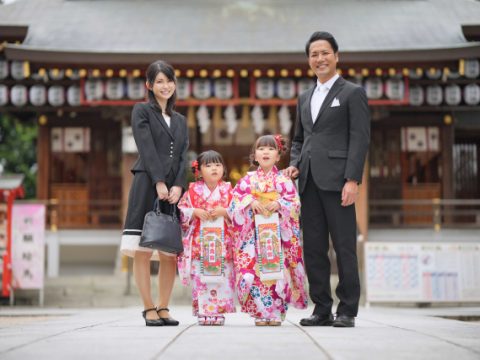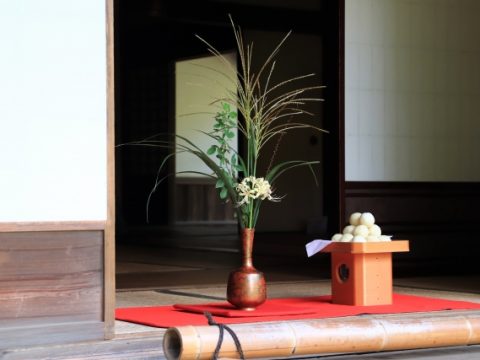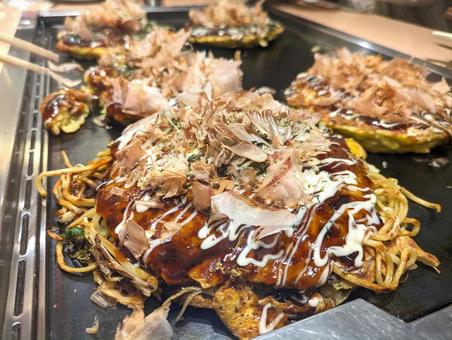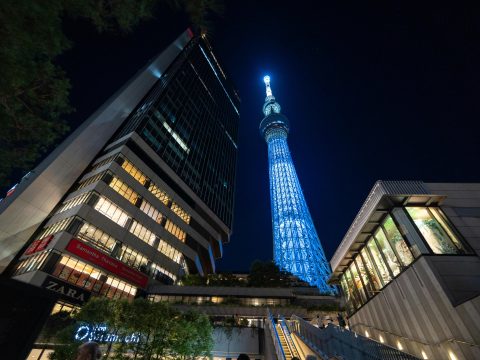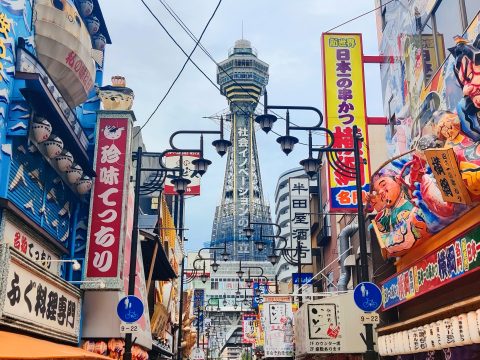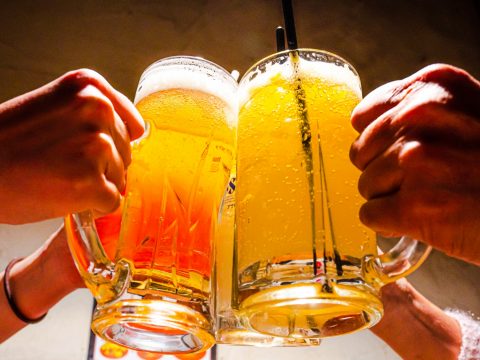Fuji apples (ふじりんご)
JAPANESE FOODS
07.11.2022

When I wrote the last article, we picked apples from our tree. I am currently living in Northern New York in the United States. The area l live in is an apple land. There are many orchards around us. So when the fall comes, I see a wide variety of apples at the market, including the Fuji apple: probably the most famous Japanese apple variety. Seeing the Fuji apple this year made me wonder if people in Japan always loved growing apples. So I did some research and discovered that the history of growing apples in Japan is relatively recent.

The very first apple came from China
Apples in Japan were first introduced from China during the Heian era (918 A.D). It was a wild apple that originated in central Asia. It was much smaller than the apples we know today and was really tart. It was often used as an offering for Buddhist temples and altars, but it wasn’t popular to consume because of its taste.
Meanwhile, the same type of wild apple spread through the silk road. In Europe, people learned to graft and started cultivating apples, which created bigger, sweeter, and more flavorful apples that became very popular in European countries. But, it did not reach Japan for a long time.

Growing apple was part of the modernization?
After the Edo era, Japan was changing rapidly. The country has adopted so many western cultures. Massive modernization has begun as we try to catch up on what we’ve missed during 200 years of isolation. During this period, the government also established domestic agriculture.

They reserved land, hired foreign experts, and imported seeds and plants, which included apples. In 1871, 74 apple trees were imported from America and distributed throughout the country to determine the ideal location for growing apples. They concluded northern part of the main island would be the best location, and to this date, Aomori and Nagano are famous prefectures for growing apples.

Since the import, Japanese apple growers, some were former samurai families, have worked very hard to fight against diseases and pests. They also poured a tremendous amount of effort into growing better-tasting apples. Fuji apple was the result of their hard work.

WWII and Fuji apples
When the pacific war broke out, the government ordered farmers to focus on growing certain kinds of crops for the country. Unfortunately, apples weren’t one of them. They even ordered to destroy the orchards in order to grow other crops on their land. Between the government orders and lack of workers during world war II, Fuji apple almost disappeared. But those apple-growing communities were strong even after being defeated during world war ll by both economy and unusual climates. They rebuilt their land and the community to grow more apples. The true Samurai spirit has brought the Fuji apple back on the market.
Now, Fuji is the most popular apple variety in Japan, and probably the most well-known Japanese variety in the world.
Next time you have some Fuji apples, you can share the history behind the delicious apple with your friends and family.

Eri Palmer
Eri grew up in Japan. She came to U.S. as an international student, and decided to stay in the country. Cooking is one of her passions, and she loves to cook Japanese food for her children.
Read previous articles by the writer
Read latest articles
KEYWORDS
- # PICKPICK
- # Resume
- # alcohol
- # Rice
- # Soup
- # winter food
- # Fast Food
- # seafood
- # spicy foods
- # raw food
- # fermented food
- # Transportation
- # MEAT
- # Edo culture
- # suits
- # clothing
- # drink
- # fish
- # seasoning
- # Japanese New Years Foods
- # Toshikoshi soba
- # Osechi Ryori
- # Ozoni
- # Christmas
- # Japanese fusion pasta
- # Wafu Pasta
- # Japanese Hot Pot
- # なべ
- # 鍋
- # Miyazaki
- # Chicken Nanban
- # Karamen
- # Autumn Wagashi
- # Mushi-yokan
- # Imo-yokan
- # Japanese Autumn Fruits
- # Autumn
- # Vending Machine
- # fall
- # dango
- # Chestnut rice
- # saury
- # Mushroom
- # Rice vinegar
- # Japanese condiments
- # 調味料
- # Sake
- # Mirin
- # Soy sauce
- # Japanese Noodles
- # Udon
- # Ramen
- # Yakisoba
- # Soba
- # Japanese Seaweed
- # 海藻
- # かいそう
- # Payslip
- # Training
- # Japanese summer foods
- # 和菓子
- # Wagashi
- # ryokucha
- # 夏
- # 飲み物
- # Ramune
- # ラムネ
- # Pokari Sweat
- # ポカリスエット
- # Calpis
- # カルピス
- # Mugicha
- # ume
- # 梅
- # うめ
- # umeshu
- # job hunting
- # tofu
- # Recruitment in Japan
- # miso
- # Japanese cuisine
- # Yellowtail and bonito
- # Children’s Day
- # Kashiwa Mochi
- # Chimaki
- # fruits
- # Kusamochi
- # Types of Agriculture in Japan
- # bread
- # パン
- # パン屋さん
- # japanese bread
- # shokupan
- # meal blead
- # anko bread
- # 桜
- # さくら
- # cherry blossom
- # visa
- # hanami
- # omotenashi
- # sakura
- # おもてなし
- # Japanese hospitality
- # oshibori
- # wet hand towel
- # hand towel
- # restaurant
- # Commuting in Japan
- # Women-only cars
- # Exit gate
- # japanese train
- # train
- # valentine
- # Japanese sweets
- # 朝食
- # Japanese Breakfast
- # Breakfast
- # Japanese
- # 日本
- # healthy
- # persimmons
- # hoshigaki
- # HR
- # work in Japan
- # jinji ido
- # corporate systems
- # Japanese work culture
- # bento
- # ekiben
- # shinkansen
- # omiyage
- # train station
- # Japanese culture
- # work culture
- # mentaiko
- # umeboshi
- # Japanese snacks
- # potato chips
- # Japanese potato chips
- # Japanese writing
- # seaweed
- # konbu
- # ocean foods
- # shio konbu
- # dashi
- # miso soup
- # food processing
- # pear
- # nashi
- # sweet potato
- # japanese sweet potato
- # stingray
- # satsuma imo
- # food value chain
- # homecooking
- # agriculture
- # Japanese homecooking
- # farming
- # nikujaga
- # shojin ryori
- # meat and potatoes
- # traditional foods
- # comfort food
- # buddhist food
- # manufacturing
- # factory
- # eihire
- # vegetarian
- # food and beverage
- # izakaya
- # yatai
- # japanese festival
- # taiyaki
- # matsuri
- # summer
- # Ikayaki
- # smart agriculture
- # shaved ice
- # kakigori
- # かき氷
- # summer dessert
- # Japan
- # Japanese foods
- # dessert
- # fruit
- # matcha
- # icecream
- # Pikcup
- # Pikc up
- # Pcikup
- # skilled labor visa
- # working visa japan
- # Dineer Table in Japan
- # Japanese manner
- # Japanese food
- # Japanese Table Manner
- # Chopsticks
- # Japanese traffic signs
- # traffic information
- # road rules in Japan
- # chocolate
- # green tea
- # Osaka
- # Work Japan
- # Japanese company
- # ikura
- # sushi
- # nigiri
- # wasabi
- # PCIK
- # PICK UP
- # PICK
- # PICKUP


